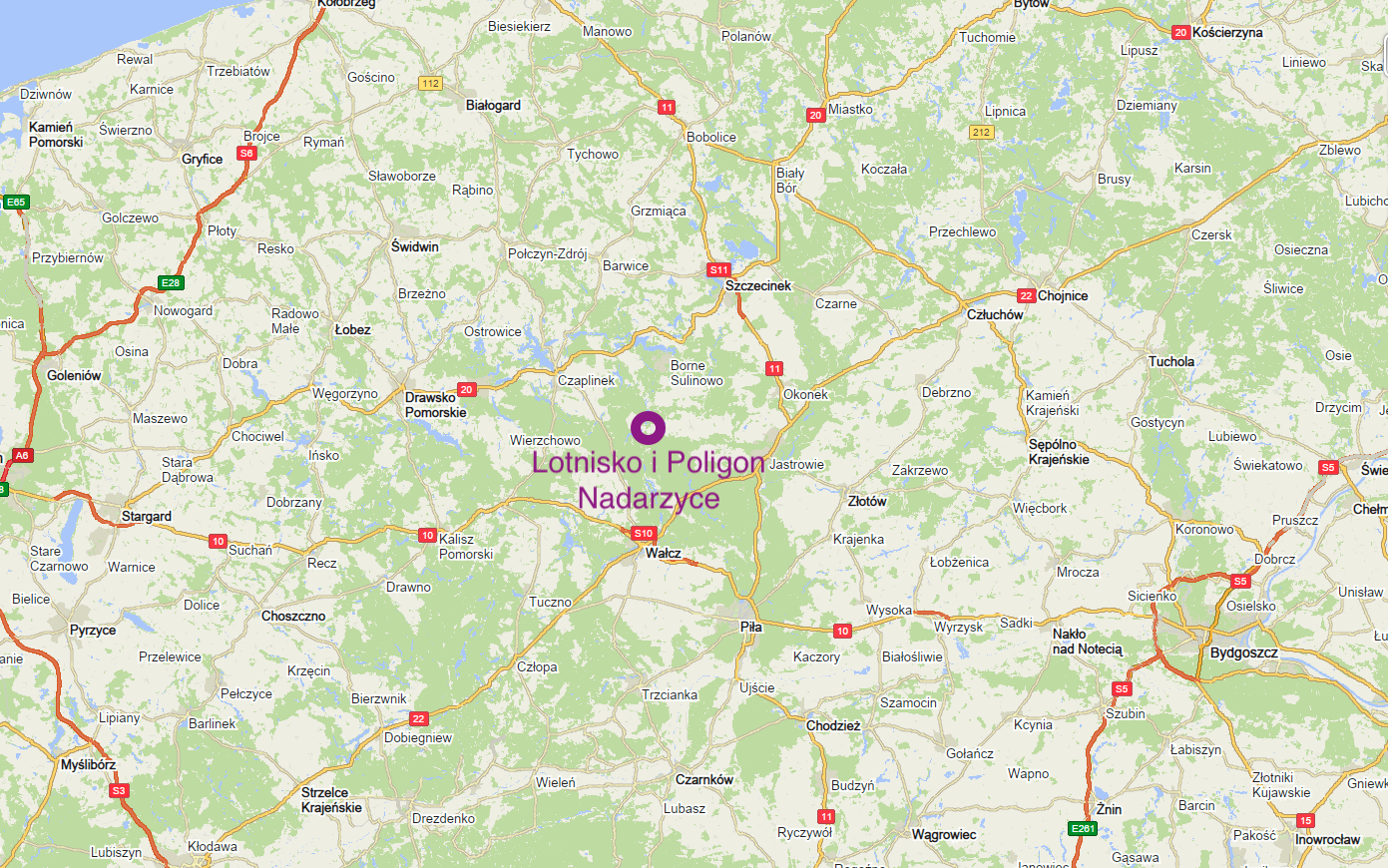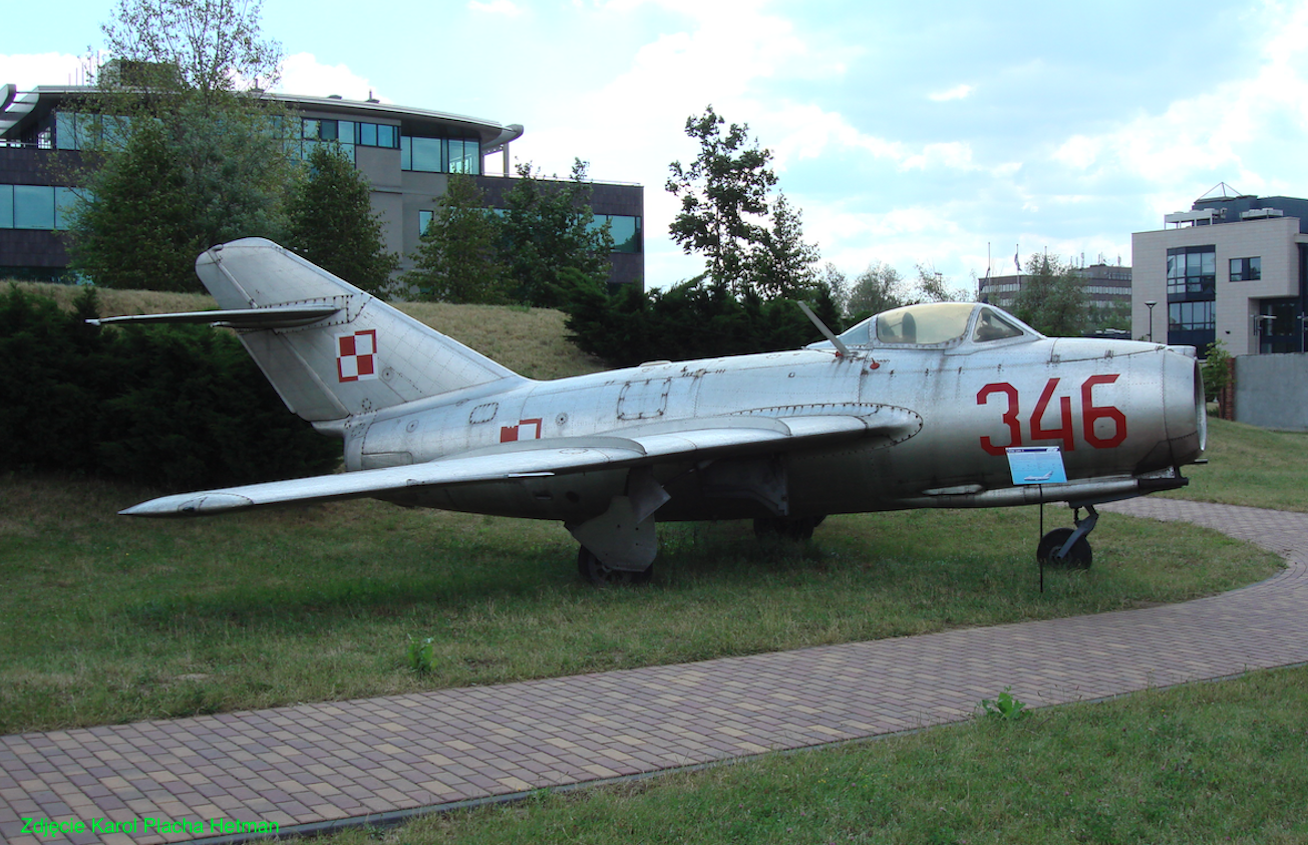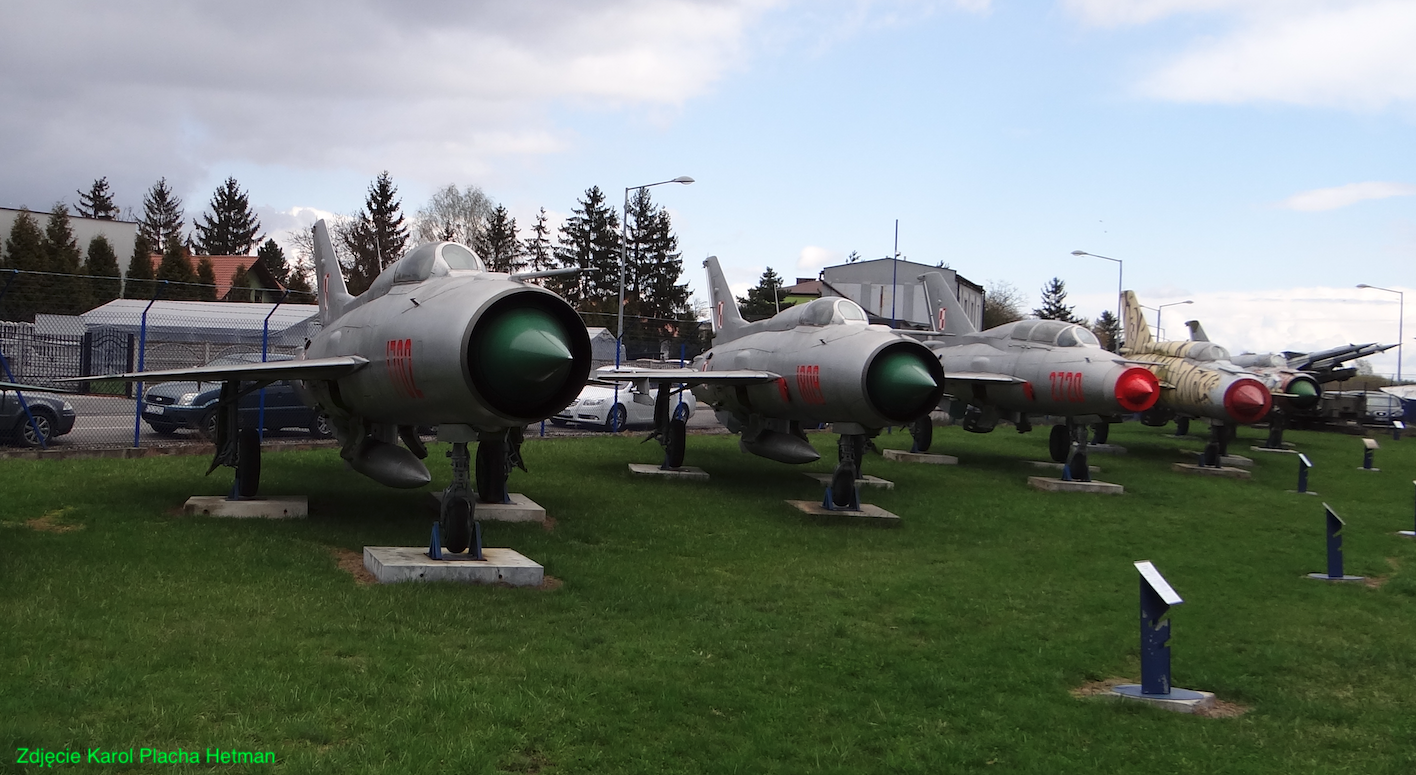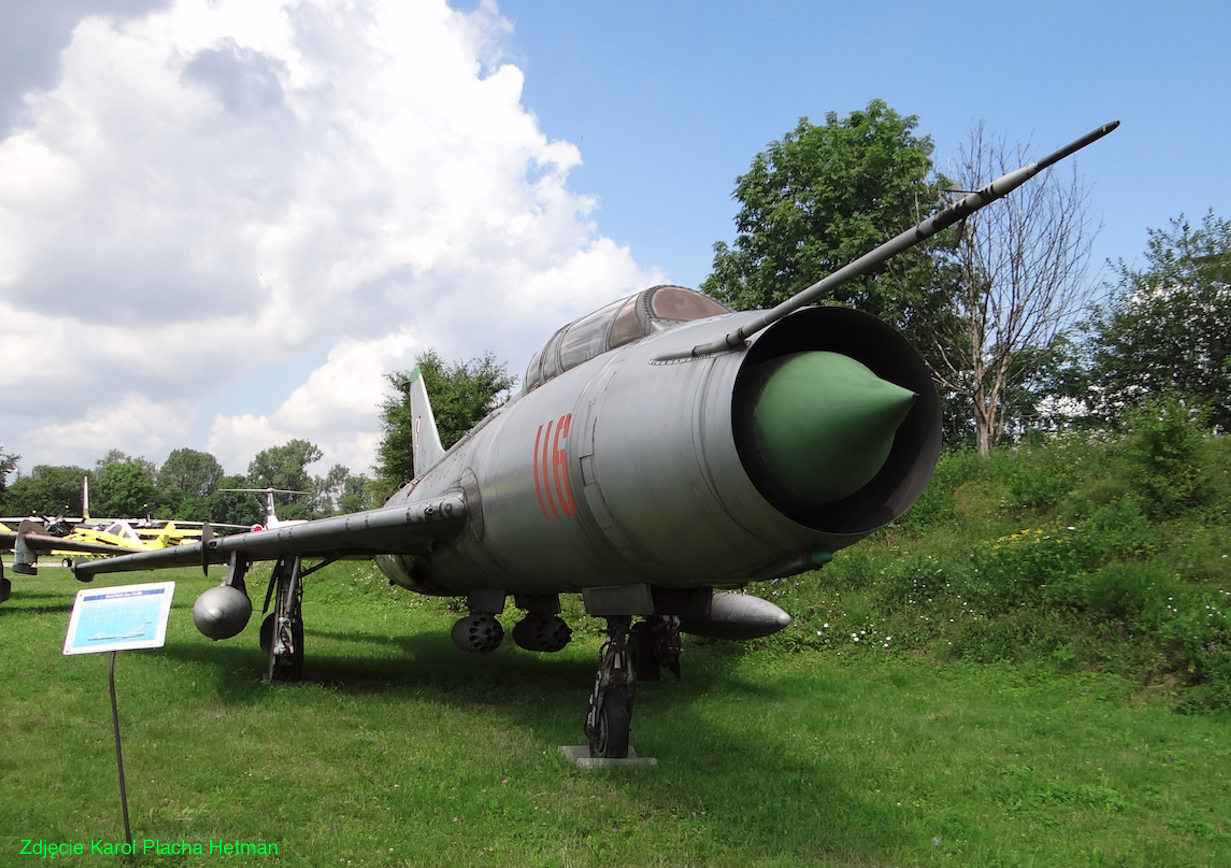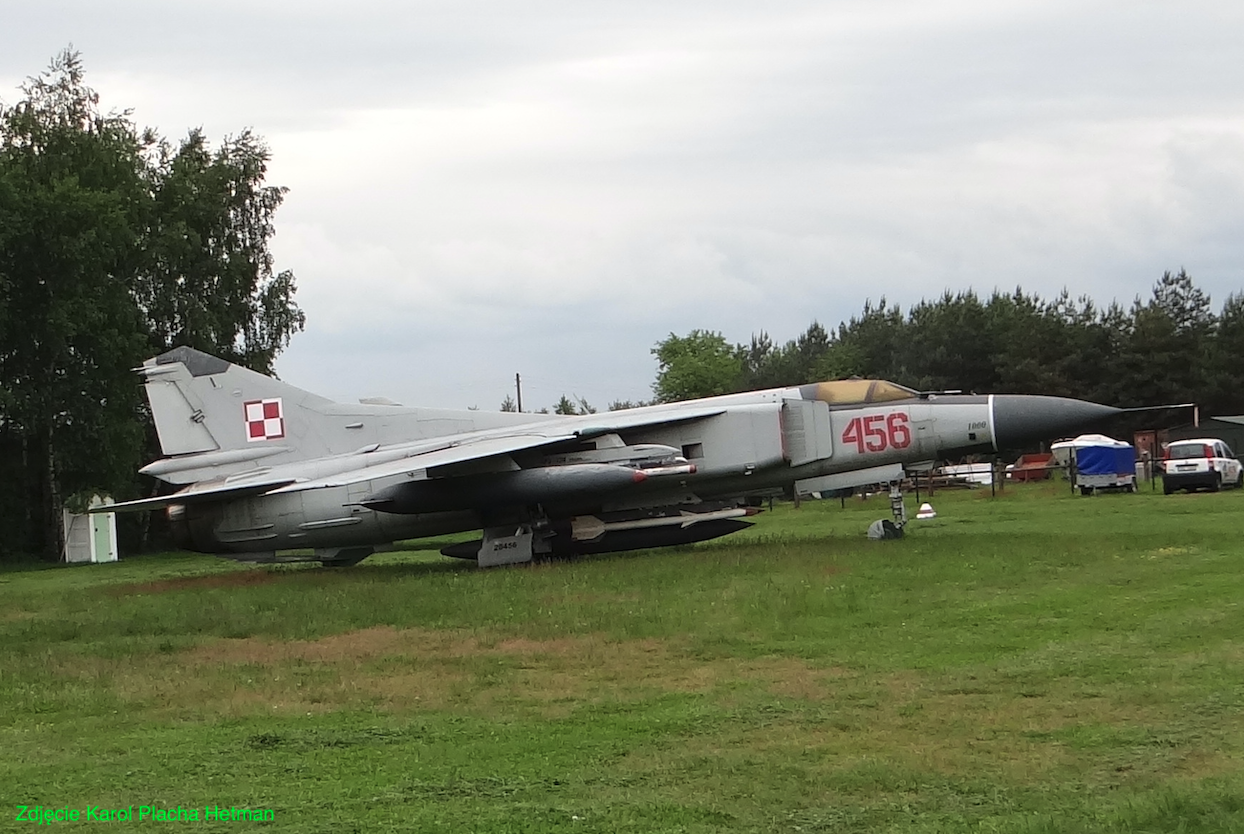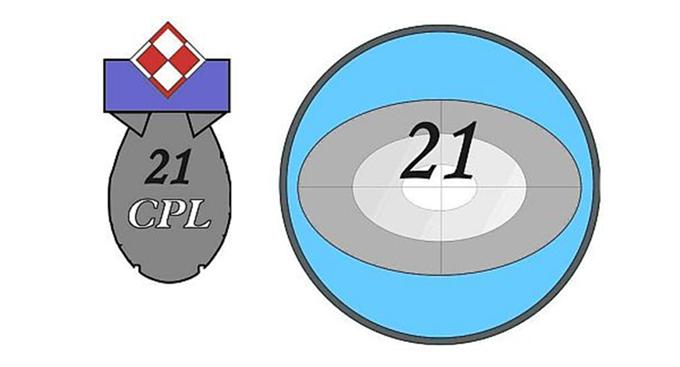Nadarzyce 2013-10-22
Nadarzyce airport and training ground.
Geographical coordinates: 53.455N 16.491E (N 53.27.15 E 16.29.26).
Aviation training ground.
In 1950, the 16th Assault Aviation Division of the Air Force in Piła was formed, which included air regiments in Piła and Mirosławiec and Poznań (Ławica Airport). In 1957, the 16th Air Assault Division had; 6. PLSz Piła, 51. PLSz Piła, 53. PLSz Mirosławiec. In 1954, the Division ended the operation of dive bombers, remaining only with Il-10 aircraft, which were withdrawn by 1960, and using MiG-15, Lim-1/2 aircraft. Therefore, it was necessary to create an air training ground adapted to the fire training of these air regiments.
In Nadarzyce there was a spare airfield with a ground take-off field. No air regiment was stationed on it, and it was looked after by the Reserve Airport Command. There was already a bombardier circle and shooting targets on its territory. Pe-2, Il-10 and Tu-2 planes that were stationed at Ławica Airport flew here and dropped cement bombs, and on-board gunners fired live ammunition at ground targets. There was a huge Soviet military complex with two cities nearby; Borne Sulinowo and Kłomino. The total area is 18,000-20,000 hectares. It was used by the Moscow armored, artillery and missile forces.
It was a good place to establish an air force training ground, although not the only one. The area of Międzychód (near Skwierzyna) and Witkowo (near Powidz Airport) was taken into account. The 21st Aviation Training Ground in Nadarzyce was established in 1953. The official date of the training ground is March 3, 1953. The training ground was managed by the commander of the training ground, who also managed the airport.
Appropriate financial resources, equipment and soldiers were allocated for the construction of the training ground. An airfield construction battalion with the strength of two companies was sent to the construction. About 150-200 people. The officers lived in private quarters in a nearby town, and the conscript soldiers camped in tents and barracks. In 1954, the first buildings were commissioned; barracks, apartment block and warehouse. A multifunctional building, garages, a workshop and stables were also built. Horses were used not only to maintain the training ground infrastructure, but also to transport supplies from the superior military unit, which was located in Wałcz, 22 km away. The soldiers had several bicycles at their disposal. The first targets in the form of wooden structures and scrap cars appeared on the training ground itself. The permanent service of the training ground was in the strength of a platoon. In 1955, the training ground received the first 2 Lublin-type trucks, a tractor with a trailer and a motorcycle.
In 1957, a concrete runway and taxiways were built at the airport. Since then, Lim-1/2 aircraft used as fighter-bomber (strike) aircraft have often appeared here. From the mid-1960s, MiG-21 fighters landed here, which also practiced attacks on ground targets. Similar attacks with MiG-21 fighters were practiced in the Błędowska Desert. But most often Lim-6 bis planes stayed here (the second half of the 1960s and the entire 1970s).
At the end of the 1960s, more buildings were built here, including residential ones. From then on, the officers were not quartered in the houses of the hosts from the nearby town.
In 1976, the training ground was one of the arenas of the great exercises of the Warsaw Pact troops under the code name "Shield 76". The training ground, which was referred to as the 21st Air Training Ground, was renamed the 21st Central Air Training Ground. The training ground command obtained funds and thanks to them, new targets appeared on the training ground in the form of decommissioned targets; MiG-15/Lim-2 and MiG-17/Lim-5 aircraft, T-34 tanks and other combat vehicles. As a result of the Shield 76 exercise, the training ground was also used by Soviet units (Northern Group of the Soviet Army). Not only that, the Muscovites began to send here the troops of the countries to which they sold Mi-24 helicopters. For example, from Nicaragua (first half of the 80s).
Over time, new facilities and buildings were built. Among other things, the current command post, fuel and lubricants warehouse, and three blocks of flats were built in the immediate vicinity of the unit. The constant service of the training ground was in the strength of the company.
At the end of the 1970s, electric evaluation of shooting results began to be introduced. There were simply cameras filming the effects of the use of weapons carried by airships. In this way, didactic material began to be created, used in the training process in military schools and combat units.
Su-7 B aircraft (initially intended for nuclear attacks) began to appear on the training ground, which basically ended their careers. The next aircraft are strike aircraft with variable geometry; from 1974, Su-20 and from 1984, Su-22, which are still training there today.
At the beginning of the 1990s, the importance of the 21st CPL grew even more. This was due to the reduction of the armed forces, and as a result, the aviation training grounds in Solec Kujawski and Podborsko were liquidated. Almost all air regiments began training in Nadarzyce.
From 1996, the 21st CPL began to prepare to meet NATO standards, which was related to Poland’s accession to this alliance. The infrastructure was changing. There was a new communication equipment that met NATO standards. Poland’s accession to NATO introduced completely new procedures for dealing with aircraft performing combat tasks on the training ground. Since 1997, aircraft belonging to NATO began to appear over the training ground. Episodes or even major parts of the exercises were carried out here. It must be said that the 21st CPL was very much to the liking of our allies.
On September 2, 1999, MiG-23 aircraft ended their service in Polish Aviation. 6 machines were transferred to the training ground in Nadarzyce and became ground targets. Another, one became part of the local open-air museum.
In 1999, the Republic of Poland joined NATO. The 21st Central Air Training Ground became part of the Mirosławiec garrison with the 12th Air Base and the 8th Tactical Aviation Squadron.
In 2003, the Polish Air Force ended the operation of MiG-21 aircraft. Earlier, several machines of this type were delivered to Nadarzyce. Now more have joined. Also the ones painted in camouflage.
From 2007, the Polish Lockheed Martin F-16 Jastrząb began to practice on the training ground. Analogue evaluation of shooting results has been replaced with digital one.
In 2009, by the decision of the Minister of National Defense (Decision No. 243/MON of July 15, 2009), a commemorative badge and a hallmark of the 21st Central Aviation Training Area were introduced.
In 2010, the 8th ELT was redeployed to Świdwin, the 12th BLot was renamed the 12th Mirosławiec Airport Headquarters, and the 21st Air Force Command came under direct subordination to the Polish Air Force Command in Warsaw. Currently, the airport in Mirosławiec is the 12th Base of Unmanned Aerial Vehicles. The official name of the 12th Base of Unmanned Aerial Vehicles.
2013 year.
21 CPL continues to secure the operation of air squadrons and tactical compounds. Both during the day and at night. It is the basic element of the military aviation fire training system. 21. The Central Air Training Ground in Nadarzyce is the largest air training ground and the only currently active bombing ground in Europe. The Polish training ground is also used by the Air Forces of the alliance of NATO countries, including Italy, UK, Belgium, the Netherlands, Canada and the USA.
The basic area of the training ground is approximately 7,950 hectares and has practically not changed since 1953. The so-called working field, i.e. the area where live ammunition, missiles of the p-z class (air-to-surface or, according to the new nomenclature, air-to-surface) missiles are used, is approximately 1,500 hectares. Training targets are decommissioned aircraft, tanks, combat vehicles and cannons. About the very creation, there is an area simulating the RWY (runway). Since 2007, almost 200 air attacks per year have been carried out by individual aircraft/helicopters, pairs or flights. The training ground enables the use of combat and training means of combat, ranging from on-board small arms, through various types of bombs (high-explosive, high-explosive, incendiary, guided) weighing up to 500 kg, and ending with guided missiles. All activities carried out on the training ground are filmed, and their effectiveness and accuracy are determined using the integrated system for evaluating the use of air combat assets. In addition, conditions have been created here not only to perform specific fire tasks (strikes), but also equipment and mock-ups have been set up to train reconnaissance and indicate specific targets from the air. For the purpose of realistic depiction of various situations of the modern battlefield, copies of withdrawn combat equipment – planes, tanks, combat vehicles or cannons – are used here. Successively, new training ground targets are being created, which serve to increase the attractiveness of aviation training. In this age, important exercises such as; Eagle Claw, Ocelot, Brave Eagle, Clean Hunter, Ułański Orzeł, Cooperative Bear, Victory Strike, Eagle Talon, Kania, Bielik, Kondor, ZLOT, Anakonda.
It is planned to equip the 21st CPL with the so-called active electronic warfare system. This will allow the training ground to be fully prepared for the new NATO standards. In addition to strike aviation, the training ground is also used by reconnaissance aircraft/helicopters. Since 2009, our C-130 Herkules transport planes have also been training here. Among other things, defensive maneuvers against attacks from the ground using flares and other equipment. The training ground is used by the Air Force Institute of Technology.
For many years, the 38th Minerski Patrol of Mine Demining has been performing tasks at the training ground, which primarily deals with the destruction of dangerous objects left after air operations. This branch is within the structures of the 21st CPL.
At the 21st CPL there were also situations when the aircraft is level with the horizon. Black smoke from burning jet fuel appears. Everyone then looks for open canopies of parachutes. Sometimes it ends only with damaged equipment, and sometimes, unfortunately, with what we call a tragedy. Fortunately, there were few such cases in Nadarzyce.
The last known accident happened on September 25, 2007. An AMX-T two-seater battlefield aircraft belonging to the Italian Air Force crashed around 11:10 am near Czempiń in Wielkopolska. The cause was engine failure. Both crew members – an Italian and a Pole (Capitano Michele Grassi from 132° Gruppo, 51° Stormo, from the Istvana base, and Captain Grzegorz Gołas from the 7th ELT from Powidz) managed to eject and escaped the accident unscathed. The aircraft was taking part in the Italian Dancer exercise. Attacking ground targets was practiced at the training ground in Nadarzyce with the use of unguided weapons (cannons, npr, bombs). Italian planes were based at Powidz Airport.
On March 3, 2013, the 21st CPL celebrated its 60th anniversary.
Nadarzyce Airport.
ICAO airport code – EPNA. The status of Nadarzyce Airport itself is unclear. According to the documents, the airport is decommissioned, but it is still used by military aviation. It is true that MiG-29, Su-22 and F-16 Jastrząb aircraft do not land on it, but helicopters do. The airport is an integral part of the training ground.
21st Central Air Force Training Ground – Nadarzyce.
Province: Greater Poland. Address: Nadarzyce 1, 64-915 Nadarzyce. Phone: 67/250-61-11.
Written by Karol Placha Hetman

